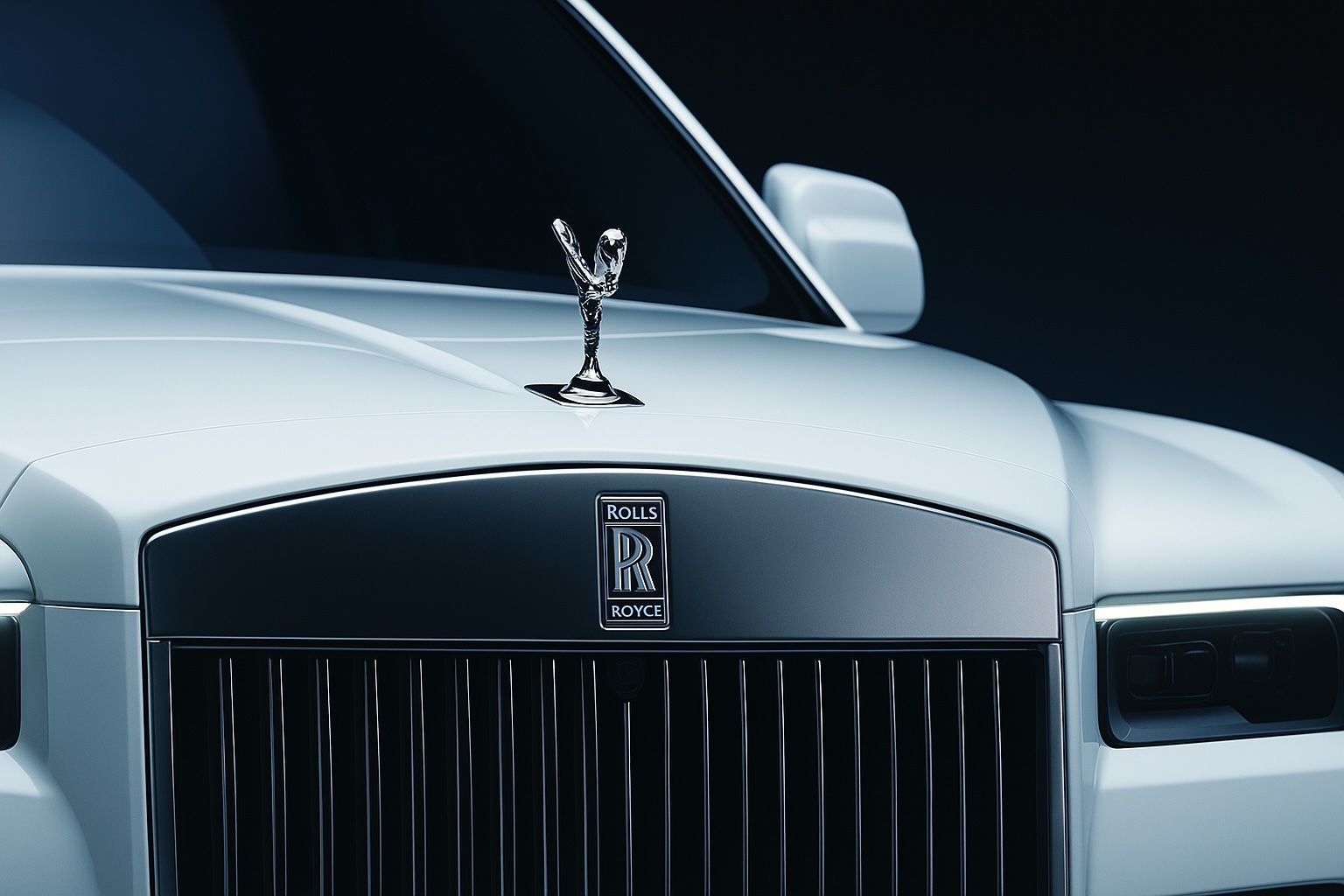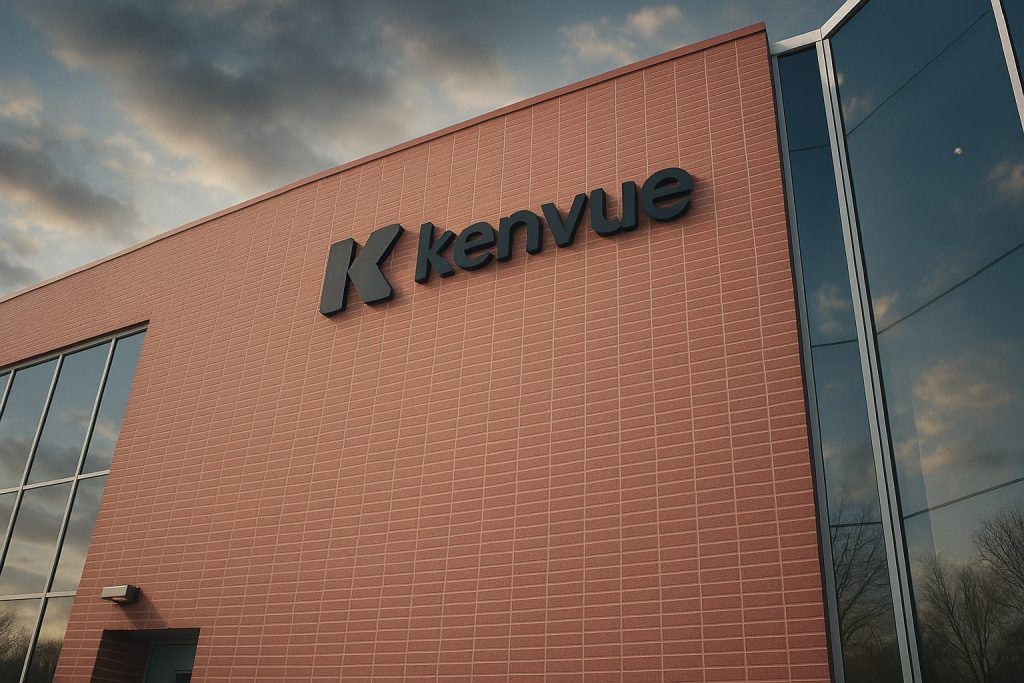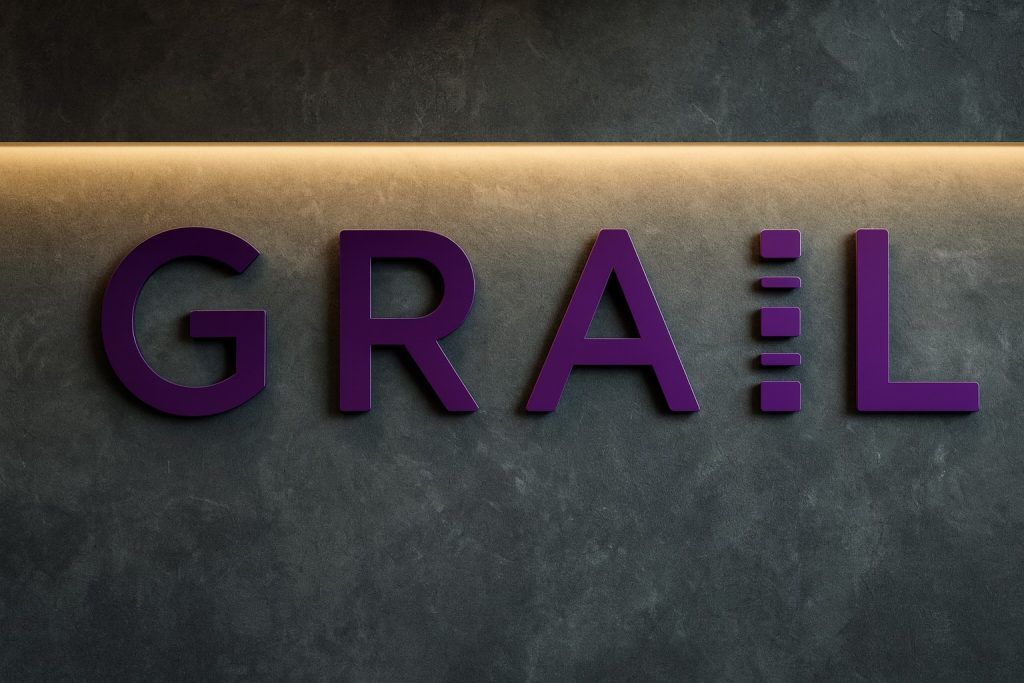- Stunning 2025 rally: Rolls-Royce Holdings (LSE: RR) shares have surged about 100% year-to-date, recently nearing an all-time peak around 1,196 pence (≈£11.96) – roughly double their level at the start of the year [1]. The stock now trades near £11.10 after a slight pullback this week as investors lock in profits.
- Powered by jet engine boom: Soaring demand for aircraft engines and defence contracts has fueled this climb. First-half 2025 underlying profit jumped 50% to £1.7 billion [2], prompting Rolls-Royce to raise its full-year forecast and sending shares to record highs [3] [4].
- Latest news (Oct 17, 2025): The company unveiled a new “LessorCare+” service with Avolon to streamline engine maintenance for aircraft lessors [5]. Meanwhile, Rolls-Royce is expanding in clean energy – selected to build the UK’s first small modular reactors (SMRs) with £2.5 billion government backing [6] – and eyeing global opportunities like India’s next-gen fighter jet engines [7].
- Analysts divided on outlook: Many analysts remain bullish, citing robust order backlogs and cost cuts. UBS even raised its price target in late September, underscoring a consensus that the turnaround “has legs” [8]. Valuation is steep, however – around 40× forward earnings, rich for an engineering stock [9]. Some experts warn of near-term “turbulence,” with one technical analyst predicting shares “plunge to 1,000p” before rebounding [10].
- CEO confident in turnaround: Chief Executive Tufan Erginbilgiç insists the company’s “transformation [is] delivering” and sees “substantial growth prospects beyond the mid-term” [11]. Under his watch, Rolls-Royce has resumed shareholder payouts – reinstating its dividend (6 pence interim) and launching a £1 billion share buyback in 2025 [12] – a vote of confidence after years of turbulence.
- Market watching next moves: With the stock among the FTSE 100’s top performers this year, investors are keenly awaiting Rolls-Royce’s next trading update in November. Will new orders and a booming civil aviation recovery keep the momentum going, or will the recent retreat turn into a larger correction? The stakes are high for this storied British engineering giant now valued around £100 billion [13].
Stock Price Soars to Multi-Year High
Rolls-Royce’s stock has been on fire in 2025. The share price has climbed ~124% over the past 12 months, far outpacing the broader market [14]. After languishing below £1 in 2020’s crisis, the stock took flight as global air travel rebounded and defence spending surged. By late September this year, Rolls-Royce shares hit approximately 1,196p, which TS2.tech notes is a multi-year (and effectively all-time) high for the company [15]. This remarkable rally – about +100% year-to-date – has elevated Rolls-Royce into the top tier of London-listed companies, with a market capitalization near £99–100 billion [16]. It’s now among the five most valuable firms on the FTSE 100 index, an almost unthinkable turnaround from October 2020 when the stock traded under 40p during the pandemic crisis [17].
Recent movements: In the past few days, Rolls-Royce’s stock has cooled slightly from its peak. After touching £11.40 earlier this week, shares eased back to around £11.03–£11.10 by Friday (Oct 17) afternoon. Traders attribute this dip to profit-taking – not surprising after such a massive run-up. Technical charts also showed the stock bumping against the £12.00 resistance level, prompting a healthy breather. “It is common for a stock to retreat before hitting key resistance,” one analyst observed, noting Rolls-Royce formed a bearish divergence pattern after its September highs [18] [19]. In fact, Invezz analyst Crispus Nyaga suggests the most likely scenario is a continued short-term pullback “likely [to] see [the stock] plunge to the psychological level at 1,000p” before any new rally [20]. That worst-case would mark roughly a 10% drop from current levels – a not-unheard-of correction for a stock that nearly tripled in two years. On the upside, if shares break above ~1,196p (the year-to-date high), it “will point to more gains to 1,200p and above,” Nyaga adds [21].
Even with recent wobbles, Rolls-Royce’s year-to-date performance remains extraordinary. By comparison, the FTSE 100 index is up only modestly, and Rolls’ rally singlehandedly helped push the FTSE to record highs this summer [22] [23]. The stock’s 2025 surge of ~100% follows a 93% jump in 2024, meaning early investors have seen fourteen-fold gains since 2020 – truly a “phoenix-like recovery” for a company that was on its knees just a few years ago [24]. It’s little wonder Morningstar UK just named Rolls-Royce its “Stock of the Week,” noting shares are up 93% in 2025 and asking if this FTSE high-flier is “still a Buy” at these levels [25].
Big Wins and Recent News
The stellar stock performance reflects real improvements in Rolls-Royce’s business. The company has been firing on all cylinders (and turbines), posting stronger results and clinching major contracts across its divisions:
- Blowout earnings: In late July, Rolls-Royce reported that underlying operating profit soared 50% in the first half of 2025 to £1.7 billion, up from £1.1 billion a year prior [26]. Revenue for H1 hit £9.06 billion, up 11%, as airlines ramped up long-haul flying and demand for spare engines and services spiked. These strong half-year results enabled the company to raise its full-year profit forecast – from £2.7–£2.9 billion previously to £3.1–£3.2 billion – signaling confidence that the turnaround is ahead of schedule [27]. The earnings announcement “pushed the company’s shares to a fresh all-time high” of around £11.09 in July [28]. As The Guardian reported, that rally also lifted the entire FTSE 100 index to a record peak, underlining Rolls-Royce’s outsized impact on the UK market [29]. “The results helped propel Rolls-Royce’s shares up 10.5%…to a record high of £11.085, driving the company’s valuation above £90 billion for the first time,” the Guardian noted [30]. This is a dramatic turnaround for a company valued near £5 billion at its COVID trough.
- Turnaround milestones: Under CEO Tufan Erginbilgiç (who took charge in January 2023), Rolls-Royce has executed a “multi-year transformation” program to cut costs and boost reliability in its engines. Erginbilgiç famously declared Rolls was on a “burning platform” when he arrived [31] – blunt words that rattled some, but he has since made good on promises to shake up the culture. Efficiency efforts dubbed “Project Phoenix” are targeting £1 billion in cost savings and higher profit margins by 2027 [32] [33]. Crucially, Rolls-Royce achieved its 2023 turnaround targets a full two years ahead of schedule, according to the Financial Times [34]. Hitting those goals early – alongside a return to positive cash flow – gave management the green light to resume shareholder returns in 2025 [35] [36]. In August, Rolls paid its first dividend since 2020 (a 6 pence interim) and initiated a £1 billion share buyback [37]. For long-suffering investors, these moves were tangible proof that Rolls-Royce is financially healthy again. “Notably, Rolls has also resumed shareholder payouts (first dividend since Covid)…signaling confidence in cash flow,” TechStock² (TS2) observed [38]. The stock jumped on the dividend news, as interactive investor analyst Victoria Scholar pointed out that investors “are welcoming its cost cutting plans” and the gains have begun to reverse years of underperformance [39].
- Defence & nuclear deals: Rolls-Royce’s revival has been aided by a boom in defense spending and government support for new nuclear technology. In January 2025, the UK Ministry of Defence awarded Rolls-Royce a massive £9.0 billion contract (dubbed “Project Unity”) to design and supply the nuclear reactors for Britain’s next-generation submarines [40]. The eight-year deal – worth about $11 billion – underpins the Royal Navy’s nuclear deterrent and will create or safeguard thousands of jobs [41] [42]. Defence Minister John Healey said the contract “is a boost to British jobs [and] our nuclear deterrent”, emphasizing that defence is “part of the engine for economic growth” in the UK [43]. Then in June, Rolls-Royce’s Small Modular Reactor (SMR) unit won a competitive race to build Britain’s first mini nuclear reactors, securing £2.5 billion in government funding for the program [44]. This victory positions Rolls as a frontrunner in the emerging SMR market, which could be a multibillion-pound global opportunity if the technology succeeds [45] [46]. (The company even had to deny rumors that it was planning an IPO spinoff of the SMR division, after a news report speculated about fundraising options [47] [48].) These government-backed projects bolster Rolls-Royce’s long-term pipeline and underscore its strategic importance in both defence and energy transition.
- Civil aerospace momentum: On the commercial aviation side, Rolls-Royce is benefiting from a sharp recovery in long-haul air travel and pent-up demand for fuel-efficient jets. Its large Trent engines power popular wide-body aircraft like the Airbus A350 and Boeing 787 – exactly the planes airlines are relying on as international travel rebounds to ~95% of pre-pandemic levels. Airlines are not only flying their planes more (driving up spare parts and servicing revenue for Rolls), but also ordering new jets again. In a trading update on Sept 29, 2025, Rolls-Royce disclosed a blockbuster £8.5 billion in new orders during the third quarter, ~22% higher than the same period last year [49]. These included big wins in both civil aerospace and defense. Management highlighted “stronger demand for Trent widebody engines and military systems amid geopolitical tensions,” according to TS2.tech’s summary [50]. The order surge sent Rolls-Royce shares up 8.4% on the day [51] – a clear sign that investors are rewarding the company’s sales momentum. Rolls also reiterated its full-year guidance in that update and said it was on track to hit free cash flow of ~£2.1 billion this year [52], thanks to improved profit margins and higher engine flying hours (airlines pay Rolls based on hours flown under many service contracts). Notably, Rolls’s civil aerospace division achieved an operating margin of 25% in the first half – extremely robust, and a sign that Erginbilgiç’s focus on longer engine durability (so-called “time on wing” improvements) is paying off [53] [54]. The company has been renegotiating long-term maintenance contracts to charge more for its services, which also boosts profitability [55].
- Aftermarket innovation: In the latest company news on October 17, Rolls-Royce introduced LessorCare+, an upgraded support package for aircraft leasing companies. Launched with Irish leasing giant Avolon as the first customer, LessorCare+ is designed to simplify engine lifecycle management for lessors who own Rolls-powered aircraft [56]. The new service expands on Rolls’s original LessorCare program with more data-driven insights, fleet management tools, and risk-sharing arrangements to make engine maintenance more predictable. “This launch marks another milestone in our longstanding relationship with Avolon… and is an important step in delivering for one of our most important customer groups,” said Luke Mallows, Rolls-Royce SVP for Marketing & Leasing [57]. Avolon’s SVP Mark Harrison added that LessorCare+ will “allow greater predictability and efficiency in meeting our customers’ needs” [58]. While a technical update, this move shows Rolls-Royce’s commitment to its aftermarket services, which are a key revenue stream. By strengthening partnerships with lessors (who finance a huge portion of the world’s airline fleets), Rolls aims to secure more stable, long-term service agreements for its Trent engines. It’s also a reminder that the company is thinking beyond just making engines – it’s leveraging digital tools and analytics to add value over an engine’s decades-long service life. The news didn’t make major headlines but was noted in industry wires and fits the pattern of Rolls-Royce diversifying its offerings.
- Geopolitical context: It’s worth noting that macro events can sway sentiment on Rolls-Royce in the short term. For example, defence stocks (including Rolls, BAE Systems, and Babcock) saw a brief dip in early October amid hopes for de-escalation in the Middle East conflict [59]. Investors sometimes rotate out of defence names when geopolitical tensions appear to ease, given the sector’s strong rally this year on the back of higher military spending. Conversely, any sign of prolonged conflict tends to lift these stocks. Likewise, trade policy or supply chain news can have an effect – Rolls-Royce sources materials like titanium globally, so issues with tariffs or suppliers can rattle investors [60]. Thus far, however, none of these external jitters have derailed the Rolls-Royce rally in a meaningful way. The company’s underlying trajectory – improving results and a clearer strategy – has remained the dominant narrative.
In short, Rolls-Royce’s recent news flow has been overwhelmingly positive. The combination of blowout financial results, huge contract wins, and a return to shareholder rewards paints the picture of a venerable British company that has executed a remarkable comeback. As the Guardian summed it up, Rolls-Royce now stands as a “rejuvenated British industrial champion” with a “soaring stock”, thanks to “sustained engine demand and rigorous cost control” [61].
Analyst Insights and Market Outlook
After such a steep ascent, the critical question is: what comes next for Rolls-Royce’s stock? Is this the peak of the party, or just a pit stop on the way higher? On this, there is a lively debate unfolding in the City and beyond, with bulls touting Rolls’s bright future and bears urging caution about its valuation.
Bullish case: Many analysts argue that Rolls-Royce’s fundamentals justify further gains – albeit likely at a more measured pace. The company’s core markets are buoyant. “Global air travel growth and rising defense spending are driving demand for advanced jet engines, benefiting Rolls-Royce,” noted Zacks Equity Research in an analysis this month [62]. That dual tailwind (booming commercial aviation and military procurement) means Rolls is firing on both its main cylinders. Zacks pointed to a record order backlog of over 2,000 widebody engines that will feed Rolls’s production for years [63], as well as new opportunities like a planned UK-Japan-Italy fighter jet program (the Tempest project) and the burgeoning SMR energy market. Likewise, Investec analysts have applauded Rolls’s recent order wins, calling the Q3 booking spree “de-risking [the] FY outlook” – i.e. making it more certain the company will hit its annual targets [64]. Investec reportedly rates the stock a Buy, with a price target around £6.80 per share (680p) [65] – though that figure appears outdated and far below the current market price, suggesting they may update their model. Bank UBS is another notable bull: at the end of September, UBS raised its price target for Rolls-Royce (exact figure undisclosed) and maintained a “Buy” stance, a move that helped the stock jump ~2% in a day [66] [67]. UBS’s confidence, echoed by several peers, “underlines [the] consensus that the recovery has legs” [68]. In fact, the average analyst rating on Rolls is a moderate Buy (around 2.1 on a 1–5 scale, where 1 is strong buy) according to Reuters [69]. Many UK fund managers remain overweight Rolls-Royce in their portfolios, viewing it as a premier turnaround play [70] with more room to run if management delivers on growth promises.
What kind of growth? Market forecasts compiled by analysts see Rolls-Royce’s revenue rising from roughly £19–20 billion this year to £23–25 billion by 2028, with free cash flow correspondingly climbing [71]. Underlying operating profit for 2025 is expected to come in near the top of guidance (~£3.0 billion), and to grow further in subsequent years [72]. That would put Rolls on track for its goal of ~15% operating margins by mid-decade (versus ~12–13% now) [73] [74]. The reinstated dividend is modest – equivalent to about 0.6% yield for 2025 [75] – but analysts anticipate a “growing dividend stream” going forward as earnings improve [76]. Rolls has also been deleveraging: it’s now in a net cash position (more cash than debt) and is offloading legacy assets like its pension liabilities to strengthen the balance sheet. Credit rating agencies have upgraded the company’s outlook from negative to stable/positive in light of the much-improved finances. All these factors give bulls comfort that Rolls-Royce is not a flash in the pan, but rather a company with structural tailwinds (air travel, defence, energy transition) and significantly better execution under new leadership. “If global travel and defense spending remain strong, Rolls-Royce should continue converting [its] large order backlog into profits,” goes the prevailing view [77]. In other words, the engines driving Rolls’s growth aren’t about to flame out soon.
CEO Tufan Erginbilgiç certainly strikes an upbeat tone. “This is another step on our multi-year transformation journey to build a high performing, competitive, resilient and growing Rolls-Royce,” he said recently, commenting on workforce restructuring efforts [78] [79]. More pointedly, Erginbilgiç has declared that the group’s “transformation [was] delivering” with “substantial growth prospects beyond the mid-term” [80] – a direct quote reported by Reuters that signals his optimism not just for the next quarter, but for years ahead. He argues that by fixing long-standing issues (Rolls spent years addressing durability problems in Trent 1000 engines) and instilling a more commercial mindset, the company can unlock much more value. For example, Erginbilgiç highlighted that improving “time on wing” (how long engines run before needing overhaul) will greatly boost profitability on service contracts [81]. He’s aiming for an 80% longer on-wing life by 2027 for Trent engines, which would reduce costly shop visits and increase Rolls’s margins [82]. Executives also point out that Rolls-Royce is entering new markets – such as small modular reactors, hybrid-electric aviation, and artificial-intelligence data center power systems – that could become significant profit centers in the future [83] [84]. The overall narrative from the top is that Rolls-Royce is not done growing; rather, it’s at the start of a new chapter as a leaner, more innovative aerospace and energy player. “The long-term prize,” Erginbilgiç suggests, includes re-entering the narrow-body jet market (dominated by rival GE/Safran) with new engine technology, and capitalizing on the global push for net-zero emissions by 2050. These ambitions hint at substantial upside if Rolls can pull them off – a reason some investors are in for the long haul.
Bearish or cautious view: On the other side, a growing chorus of analysts and market commentators caution that Rolls-Royce’s valuation has become stretched after its meteoric rise. At around £11 per share, the stock trades at roughly 38–43 times 12-month forward earnings (P/E) by some estimates [85] [86]. That is well above the industry norm (for instance, US peer General Electric’s aerospace unit trades near 21× earnings). Even accounting for Rolls’s high growth rate, a P/E north of 40 implies a lot of good news is already priced in. “Rolls’s forward P/E…is rich by historic standards, so execution and growth are key,” analysts observe [87]. Essentially, the company will need to flawlessly deliver on earnings in coming quarters to justify this lofty multiple. Any stumble – say a delay in hitting cash flow targets, or an unexpected cost issue – could trigger a sharp correction. The Motley Fool UK recently asked pointedly, “Is the Rolls-Royce share price party finally over?”, noting the stock’s 100%+ gain in a year has left it vulnerable to even minor disappointments (and indeed, shares dipped on Oct 17 as part of a broader sell-off in defence names) [88]. Some analysts have downgraded Rolls-Royce from “Buy” to “Hold” purely on valuation grounds. For example, Oriel Securities reportedly likes Rolls’s fundamentals but has a Hold rating with a £6.00 target – less than half the current price – because they see limited upside after the huge rally [89]. This might be an overly conservative view (possibly reflecting pre-rally numbers), but it underscores that a few analysts think the stock has run ahead of itself.
There are also risks on the horizon that bears flag:
- Supply chain and costs: Aerospace manufacturing is complex, and Rolls-Royce is not immune to global supply chain woes. Issues sourcing specialty materials (like titanium alloys from Russia, which have been impacted by sanctions) or snags in its own production ramp-up could constrain near-term deliveries [90]. Inflation in raw materials and labor could also squeeze margins if not managed carefully. The company has merged some engineering teams and cut thousands of jobs in recent years to become more efficient [91] [92]. While these moves are positive long-term, in the short term workforce reductions can cause disruption or even talent loss – and as one industry executive cautioned, “It is a brave thing to do [to cut jobs] when all engine-makers are ramping production” to meet surging demand [93]. Any sign that Rolls can’t deliver engines on time (or has to expedite fixes at high cost) would worry investors. So far, nothing major has gone wrong on this front in 2025, but it’s a space to watch.
- Geopolitical/market shocks: Rolls-Royce’s civil aviation business is tied to global travel health. A potential economic slowdown or new geopolitical shock could dent airline demand and thus Rolls’s aftermarket revenue. However, even here analysts are relatively sanguine – noting that even a pullback in discretionary flying would likely only shave a few percent off profits thanks to Rolls’s long-term service contracts and diversified business [94]. On the defense side, a sudden peace dividend (while good for humanity) could cool military orders. And while unlikely, a reversal in government support for nuclear or clean energy projects could hit the nascent SMR venture. These are low-probability, but high-impact events to keep in mind.
- Competition: Rolls faces formidable competitors like GE Aerospace, Pratt & Whitney (part of RTX), and France’s Safran/CFM. In the lucrative narrow-body jet market (think A320neo and 737 MAX), Rolls-Royce currently has no presence, having long ago ceded that segment to the GE-Safran joint venture [95]. Rolls’s growth therefore leans heavily on wide-body aircraft and military programs. If wide-body jet demand were to stagnate (e.g. if airlines focus more on smaller jets or if Boeing/Airbus face delays), Rolls would feel it more than rivals who have a broader product slate. Pratt & Whitney is also aggressively trying to fix its issues and regain market share in engines, and Safran is enjoying record production on narrow-body engines this year [96]. In defense, Rolls competes with the likes of GE and Pratt on fighter jet engines; it will need to fight hard to win roles on next-gen fighters (like the UK’s Tempest or India’s AMCA stealth fighter) where competition is fierce [97]. The good news is Rolls has strong partnerships – e.g. it’s expected to co-develop the Tempest engine with BAE and Italy’s Avio – but nothing is guaranteed until contracts are signed. The bottom line for skeptics is that Rolls-Royce is a great company, but not an invincible one, and at £11+ per share, there’s less margin for error.
For now, the market mood around Rolls-Royce remains largely positive, but vigilant. The coming weeks will bring more insight: Rolls is due to provide a detailed strategic update (Capital Markets Day) on November 28, and investors will be looking for any new guidance or targets from Erginbilgiç and his team [98] [99]. Additionally, any Q4 trading updates or major orders (for example, if a rumored fighter engine deal with India materializes) could sway sentiment. Many traders are also eyeing that 1,200p price level – a breakout above which could trigger another leg higher, whereas failure to hold ~1,100p support might invite further profit-taking [100].
In summary, Rolls-Royce Holdings plc has delivered one of 2025’s most remarkable stock market comebacks. The company’s fundamentals have improved dramatically – from surging profits and a £8 billion+ order book to newfound efficiency under a no-nonsense CEO. This has translated into a soaring share price and renewed optimism around a British engineering icon that not long ago was mired in crisis. “The narrative is [now] one of a rejuvenated British industrial champion,” as the Guardian aptly put it [101]. Yet, the higher you fly, the more caution is warranted. Rolls-Royce’s valuation is priced for perfection, and the stock’s recent wobble shows that even high-fliers can hit air pockets.
For investors and the public, the Rolls-Royce story has elements of both inspiration and warning. The inspiration: a storied 119-year-old company reinventing itself, riding cutting-edge demand for jets and clean power, and rewarding those who believed in its recovery. The warning: even great companies can be overbought, and markets have a way of testing exuberance. As we approach year-end, Rolls-Royce will try to keep executing to justify its new lofty altitude. Whether the stock climbs higher or runs out of fuel may depend on factors both within management’s control (hitting targets, securing new deals) and outside it (global economic winds).
For now, one thing is clear: Rolls-Royce has the market’s attention. From Bloomberg to TS2.tech to the Financial Times, everyone is talking about this meteoric rise [102] [103]. As shareholders enjoy the ride – and skeptics eye the exit – Rolls-Royce is back in the spotlight as one of 2025’s standout success stories. All eyes will be on its next moves to see if this high-flying stock can continue to defy gravity, or if it might finally come back down to earth.
Sources: Official financial reports and press releases; news and analysis from Reuters, Financial Times, The Guardian, TS2.tech, Yahoo Finance UK, Morningstar, and Reuters India [104] [105] [106] [107], among others. All information is current as of October 17, 2025.
References
1. ts2.tech, 2. www.theguardian.com, 3. www.theguardian.com, 4. www.theguardian.com, 5. news.europawire.eu, 6. ts2.tech, 7. www.reuters.com, 8. ts2.tech, 9. ts2.tech, 10. cryptorank.io, 11. ts2.tech, 12. ts2.tech, 13. ts2.tech, 14. ts2.tech, 15. ts2.tech, 16. ts2.tech, 17. www.theguardian.com, 18. cryptorank.io, 19. cryptorank.io, 20. cryptorank.io, 21. cryptorank.io, 22. www.theguardian.com, 23. www.theguardian.com, 24. ts2.tech, 25. global.morningstar.com, 26. www.theguardian.com, 27. www.theguardian.com, 28. www.theguardian.com, 29. www.theguardian.com, 30. www.theguardian.com, 31. www.theguardian.com, 32. ts2.tech, 33. ts2.tech, 34. www.ft.com, 35. ts2.tech, 36. ts2.tech, 37. ts2.tech, 38. ts2.tech, 39. www.reuters.com, 40. ts2.tech, 41. www.reuters.com, 42. www.reuters.com, 43. www.reuters.com, 44. ts2.tech, 45. www.reuters.com, 46. ts2.tech, 47. www.reuters.com, 48. www.reuters.com, 49. ts2.tech, 50. ts2.tech, 51. ts2.tech, 52. ts2.tech, 53. ts2.tech, 54. ts2.tech, 55. www.theguardian.com, 56. news.europawire.eu, 57. news.europawire.eu, 58. news.europawire.eu, 59. www.theguardian.com, 60. ts2.tech, 61. ts2.tech, 62. ts2.tech, 63. ts2.tech, 64. ts2.tech, 65. ts2.tech, 66. ts2.tech, 67. ts2.tech, 68. ts2.tech, 69. ts2.tech, 70. ts2.tech, 71. cryptorank.io, 72. ts2.tech, 73. ts2.tech, 74. ts2.tech, 75. ts2.tech, 76. ts2.tech, 77. ts2.tech, 78. www.reuters.com, 79. www.reuters.com, 80. ts2.tech, 81. ts2.tech, 82. ts2.tech, 83. ts2.tech, 84. ts2.tech, 85. ts2.tech, 86. ts2.tech, 87. ts2.tech, 88. www.fool.co.uk, 89. ts2.tech, 90. ts2.tech, 91. www.reuters.com, 92. www.reuters.com, 93. www.reuters.com, 94. ts2.tech, 95. ts2.tech, 96. ts2.tech, 97. www.reuters.com, 98. ts2.tech, 99. ts2.tech, 100. cryptorank.io, 101. ts2.tech, 102. global.morningstar.com, 103. ts2.tech, 104. www.theguardian.com, 105. ts2.tech, 106. ts2.tech, 107. cryptorank.io







